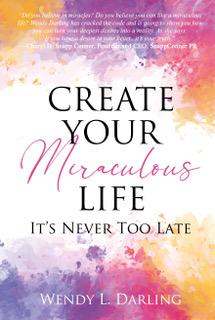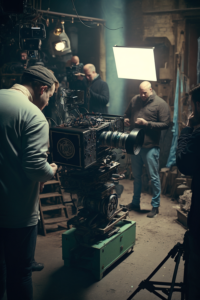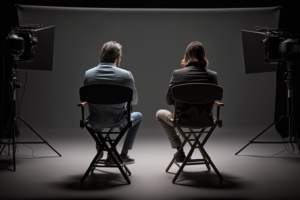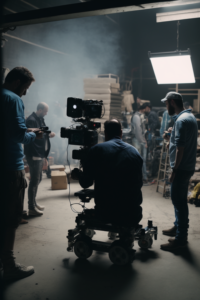Interviews
The Great Gatsby: Analyzing the Differences Between the Novel and its Film Adaptations

The Great Gatsby, written by F. Scott Fitzgerald, is one of the most iconic novels of the 20th century. Its story of love, wealth, and corruption has captured the imaginations of readers for decades. The book has been adapted into several movies, each with its own unique interpretation of the story. In this article, we will examine the differences between the novel and its film adaptations, and how each version offers a different perspective on the timeless themes of the book.
The Novel
The Great Gatsby was first published in 1925 and is set in the 1920s. The story is narrated by Nick Carraway, a Yale graduate who moves to New York to work as a bond salesman. Nick becomes involved in the lives of his wealthy neighbors, including the mysterious Jay Gatsby, who throws lavish parties at his mansion. Gatsby is in love with Daisy Buchanan, who is married to Tom Buchanan, a wealthy and brutish man. The novel explores themes of love, wealth, and corruption, as well as the decay of the American Dream.
The Films
The Great Gatsby has been adapted into several movies, with each version offering a different interpretation of the novel’s themes and characters. In this section, we will examine the most notable film adaptations of The Great Gatsby.
The 1949 Film
The first film adaptation of The Great Gatsby was released in 1949 and was directed by Elliott Nugent. The movie starred Alan Ladd as Jay Gatsby, Betty Field as Daisy Buchanan, and Macdonald Carey as Nick Carraway. The film is known for its faithful adaptation of the book’s plot, characters, and themes. However, it received mixed reviews from critics, who felt that it lacked the energy and style of the novel.
The 1974 Film
The most well-known film adaptation of The Great Gatsby was released in 1974 and was directed by Jack Clayton. The movie starred Robert Redford as Jay Gatsby, Mia Farrow as Daisy Buchanan, and Sam Waterston as Nick Carraway. The film is known for its lavish sets and costumes, as well as its famous soundtrack by Marvin Hamlisch. However, the film received mixed reviews from critics, who felt that it was too shallow and lacked the emotional depth of the novel.
The 2013 Film
The most recent film adaptation of The Great Gatsby was released in 2013 and was directed by Baz Luhrmann. The movie starred Leonardo DiCaprio as Jay Gatsby, Carey Mulligan as Daisy Buchanan, and Tobey Maguire as Nick Carraway. The film is known for its flashy visual style and modern soundtrack, which features songs by Jay-Z and Lana Del Rey. However, the film received mixed reviews from critics, who felt that it was too over-the-top and failed to capture the subtleties of the novel.
Comparison
Each film adaptation of The Great Gatsby offers a different interpretation of the novel’s themes and characters. The 1949 film is known for its faithful adaptation of the book, while the 1974 film is known for its lavish production values. The 2013 film is known for its modern take on the story, with a soundtrack that blends jazz and hip-hop. However, each film also has its own weaknesses, with critics pointing out flaws in the pacing, character development, and emotional depth of each adaptation.
One of the most significant differences between the novel and its film adaptations is the way that the characters are portrayed. In the novel, Jay Gatsby is a complex and mysterious figure, whose past is shrouded in mystery. However, in the films, Gatsby is Imagine that you are a professional writer who has been tasked with creating an informative and engaging article about a topic of your choice. Your intended audience consists of knowledgeable individuals who are interested in learning more about the subject, but may not have a deep understanding of it yet. Your goal is to present accurate and relevant information in a way that is both easy to understand and engaging to read.
To ensure that your content is original and not plagiarized, make sure to thoroughly research your topic and take careful notes on any sources you consult. Then, write your article from scratch, using your own words and ideas. As you write, try to maintain a professional tone throughout, avoiding slang, overly casual language, or anything that might be considered unprofessional or offensive.
Once you have completed your first draft, be sure to review it carefully, checking for any errors or inconsistencies, and making any necessary revisions to improve its overall quality. When you are satisfied with your work, submit it for review, confident in the knowledge that you have created original, high-quality content that meets the needs of your audience in a professional manner.
Another significant difference between the novel and its film adaptations is the way that the settings are portrayed. In the book, New York City is depicted as a glittering, vibrant metropolis, full of energy and possibility. However, in the films, New York is often portrayed as a dark and seedy place, full of danger and corruption. This change in tone reflects the different interpretations of the book’s themes, with some filmmakers emphasizing the decay of the American Dream, while others focus on the glamour and excess of the Jazz Age.
Conclusion
In conclusion, The Great Gatsby is a timeless novel that has been adapted into several movies, each with its own unique interpretation of the story. While each film offers a different perspective on the novel’s themes and characters, they also have their own weaknesses and limitations. Ultimately, the best way to appreciate The Great Gatsby is to read the book and experience the story firsthand. However, the film adaptations can also be enjoyable and offer a fascinating glimpse into how different filmmakers interpret this iconic tale of love, wealth, and corruption.
Interviews
podcasting microphone

Understanding Podcasting Microphones: An In-Depth Guide for Beginners and Professionals
Types of Podcasting Microphones
Dynamic Microphones
Dynamic microphones are the most popular choice for podcasting. They convert sound into electrical signals using a diaphragm, coil, and magnet. These microphones are robust, can handle high sound pressure levels, and require less gain than other types. This makes them excellent for capturing voices in less-than-ideal acoustic environments. The Shure SM7B and the Electro-Voice RE20 are industry standards among podcasters.
Condenser Microphones
Condenser microphones are sensitive and tend to capture a wider frequency range compared to dynamic microphones. They require phantom power to operate and are ideal for capturing subtle vocal nuances, making them great for voice work in studios. Notable condenser microphones include the Audio-Technica AT2020 and the Rode NT1-A, both widely admired for their clarity and depth.
Lavalier Microphones
Lavalier microphones, or lapel mics, are small, clip-on devices ideal for interviews and on-the-go recording. They ensure hands-free operations and are particularly useful for video podcasts. Wireless options add flexibility, allowing hosts to move freely during recordings. Popular choices include the Rode SmartLav+ and the Sennheiser ME 2-II.
USB Microphones
For those looking for simplicity and convenience, USB microphones are perfect. They connect directly to a computer without the need for additional equipment. While they may not deliver the same quality as XLR microphones, models like the Blue Yeti and the Audio-Technica ATR2100x-USB are excellent for beginners and home podcasters.
Important Features of Podcast Microphones
Frequency Response
Frequency response defines how a microphone reacts to different sound frequencies. Most voices fall within the 80Hz to 15kHz range, so a good podcasting microphone should adequately capture this spectrum. A flat frequency response is usually preferable, allowing for a more natural sound.
Polar Patterns
The polar pattern of a microphone determines its sensitivity in various directions. The most commonly used patterns are:
- Cardioid: Ideal for podcasting as it captures sound from the front while minimizing background noise.
- Omnidirectional: Captures sound from all directions, useful for roundtable discussions but picks up more ambient noise.
- Bidirectional: Captures sound from the front and rear, suitable for interviews between two people.
Sensitivity and Sound Pressure Level (SPL)
Sensitivity measures how effectively a microphone converts sound into an electrical signal. A higher sensitivity microphone captures softer sounds without requiring additional gain. Sound pressure level (SPL) measures how loud of a sound the microphone can handle without distortion. Choosing a mic with appropriate SPL ratings is crucial, especially in louder environments.
Essential Accessories for Podcasting Microphones
Pop Filters
Pop filters reduce plosive sounds (like “p” and “b” sounds) that can cause distortion. They are typically made of a screen or foam, which diffuses rapidly moving air before it hits the microphone diaphragm.
Microphone Stands and Boom Arms
Proper positioning is critical for optimal audio capture. Microphone stands and boom arms allow podcasters to adjust their microphone’s position easily while keeping hands free for notes or gestures.
Shock Mounts
Shock mounts prevent vibrations and handling noise from reaching the microphone, ensuring cleaner recordings. They are especially useful when recording in less controlled environments.
Audio Interfaces
For those using XLR microphones, an audio interface is necessary to convert the analog signal into digital for your computer. Popular models include the Focusrite Scarlett 2i2 and the PreSonus AudioBox USB, which provide excellent sound quality and ease of use.
Tips for Choosing the Right Microphone
Define Your Needs
Consider your podcasting style. Are you recording solo, interviews, or panel discussions? The type of conversations you have will dictate your microphone choice.
Budget Considerations
While it’s easy to get carried away with high-end equipment, plenty of budget-friendly microphones offer excellent quality. Determine a budget that allows for good quality without breaking the bank.
Test Before You Buy
Whenever possible, test microphones in-store to find the sound that best suits your voice. Listening to the audio capture can significantly influence your decision.
Read Reviews and Watch Tutorials
Before investing, check online reviews and tutorials. Many YouTube channels offer in-depth sound tests and comparisons to help you make informed choices.
Maintenance and Care for Podcasting Microphones
To extend the lifespan of your microphone, regular maintenance is vital. Here are some key maintenance tips:
- Keep it Clean: Dust and saliva can accumulate and affect sound quality. Use a soft cloth to wipe down your microphone regularly.
- Use Windscreens: For outdoor recording, use a windscreen to prevent wind interference and protect the mic from moisture.
- Store Properly: When not in use, store your microphone in a protective case to prevent physical damage.
Enhancing Your Podcasting Experience
Investing in a good microphone is just the beginning. To fully get the most out of your podcasting experience, include thorough planning, effective editing software, and quality recording space. An acoustically treated room, for example, can significantly reduce background noise and enhance vocal clarity.
Understanding the nuances of podcasting microphones will empower you to make informed decisions that improve your production quality. Armed with the right microphone and accessories, you can deliver a rich audio experience, engage your audience, and elevate your podcasting journey to new heights.
Interviews
Veteran actor Manoj Bajpayee speaks out against the growing influence of PR in Bollywood

From the BalleBalleRadio Entertainment Desk
Manoj Bajpayee, a celebrated actor known for his powerful performances, has recently voiced his concerns regarding the pervasive influence of PR machinery within Bollywood. Bajpayee argues that the industry’s increasing focus on public relations often overshadows genuine acting talent, leading to a skewed perception of success and merit.
Bajpayee’s comments come amidst ongoing debates about the phenomenon of ‘National Crush’ titles and the superficiality of fame. He suggests that such manufactured hype can be detrimental to the careers of trained actors who dedicate themselves to the craft, but may not possess the resources or inclination for extensive self-promotion.
He emphasized the importance of acting prowess over PR stunts, highlighting the potential humiliation faced by actors who have honed their skills through rigorous training, only to be sidelined by individuals prioritizing media visibility. Bajpayee’s own career, alongside that of fellow actor Piyush Mishra, serves as an example of sustained success built on consistent, quality performances rather than fleeting PR campaigns.
For more updates, follow us on https://facebook.com/balleballeradio. Like, Share, Comment!
-

 Editor's Choice3 months ago
Editor's Choice3 months agoRanveer Singh and Deepika Padukone Reunite for New Romantic Comedy
-

 Editor's Choice8 months ago
Editor's Choice8 months agoReview: Rekhachithram (2025) – A Masterful Blend of Mystery and Redemption
-

 Authors and Artists4 years ago
Authors and Artists4 years agoCreate Your Miraculous Life: It’s Never Too Late Wendy L. Darling
-

 People's Choice4 months ago
People's Choice4 months agoBollywood in August 2025: A Landscape of Sequels, Social Commentary, and Star Power






